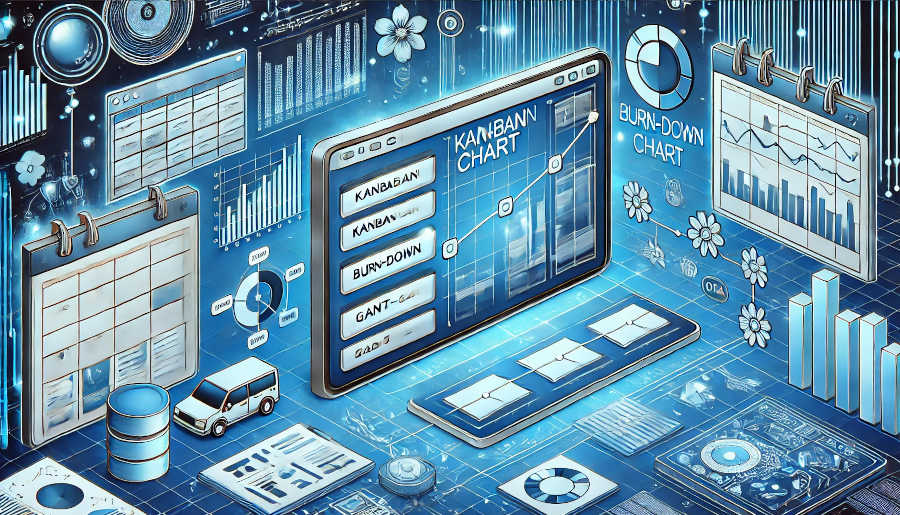Continuous Planning and Adaptation
Agile development is not a one-time process but an iterative and incremental approach. Continuous planning is essential to ensure that the project stays on track and aligns with the evolving business needs. At the beginning of each sprint or iteration, the team should review the backlog of tasks, prioritize them based on value and urgency, and plan the work to be done. This allows for flexibility in adjusting the scope and direction of the project as new information becomes available.
During the sprint, the team should also hold daily stand-up meetings to discuss progress, identify any obstacles, and make necessary adjustments. These short, focused meetings keep everyone informed and accountable. Additionally, at the end of each sprint, a retrospective meeting should be held to reflect on the process, celebrate successes, and identify areas for improvement. By continuously planning and adapting, the team can respond quickly to changes and deliver value to the customer in a timely manner.
Moreover, continuous planning helps in managing risks. By regularly reviewing the backlog and the project status, potential risks can be identified early. The team can then develop strategies to mitigate these risks, such as reallocating resources, adjusting the schedule, or seeking additional expertise. This proactive approach to risk management reduces the likelihood of project failures and ensures a more stable development process.
Customer-Centric Approach
One of the core principles of agile development is putting the customer at the center of the process. The ultimate goal is to deliver a product that meets or exceeds the customer's expectations. To achieve this, the development team should have close and continuous communication with the customer throughout the project.
The customer should be involved in the requirements gathering phase, providing clear and detailed feedback on what they need and expect from the product. This helps in creating a product backlog that accurately reflects the customer's priorities. During the development process, the team should also demonstrate the work in progress to the customer at regular intervals, such as during sprint reviews. This allows the customer to provide immediate feedback and make any necessary changes.
By involving the customer in every step of the process, the team can ensure that the final product is exactly what the customer wants. This not only leads to higher customer satisfaction but also reduces the chances of having to make major changes or rework at the end of the project. Additionally, a customer-centric approach helps in building strong relationships between the development team and the customer, which can lead to more business opportunities in the future.
Furthermore, understanding the customer's needs goes beyond just the functional requirements. It also includes aspects such as usability, performance, and security. The development team should work closely with the customer to understand these non-functional requirements and ensure that they are incorporated into the product design and development.
Cross-Functional Teams
Agile development thrives on the concept of cross-functional teams. A cross-functional team consists of members with different skills and expertise, such as developers, testers, designers, and business analysts. These teams are self-organizing and have the autonomy to make decisions regarding how to complete the work.
The advantage of cross-functional teams is that they can handle all aspects of the development process within the team. This eliminates the need for excessive handoffs between different departments or teams, which can often lead to delays and miscommunications. For example, a developer can work closely with a tester to ensure that the code is testable from the start, and a designer can collaborate with the business analyst to create a user interface that meets the business requirements.
Cross-functional teams also promote knowledge sharing and collaboration. Members can learn from each other's expertise, which helps in upskilling the entire team. This collaborative environment encourages innovation and creativity, as different perspectives are brought to the table. Additionally, having a cross-functional team allows for better resource utilization. Instead of having some team members idle while waiting for work from other teams, everyone can be actively involved in the development process.
In addition, cross-functional teams can be more responsive to changes. Since they have all the necessary skills within the team, they can quickly adapt to new requirements or changes in the project scope. This agility is crucial in today's fast-paced business environment, where the ability to respond to change is a key competitive advantage.
Iterative Development and Feedback Loops

Iterative development is a fundamental aspect of agile. Instead of trying to build the entire product in one go, the team breaks the project into smaller, manageable chunks called sprints. Each sprint results in a potentially shippable product increment.
This iterative approach allows for early and continuous feedback. After each sprint, the team can review the work done, gather feedback from the customer and other stakeholders, and use this feedback to improve the product in the next sprint. These feedback loops are essential for ensuring that the product is moving in the right direction and meeting the customer's needs.
The shorter the feedback loop, the faster the team can make adjustments. For example, if a customer discovers a usability issue during a sprint review, the team can immediately address it in the next sprint. This iterative process also helps in reducing the risk of building a product that does not meet the customer's expectations. By getting feedback early and often, the team can course-correct before it's too late.
Moreover, iterative development allows for better management of complexity. By focusing on small, incremental improvements, the team can handle complex problems more effectively. Each sprint builds on the previous one, gradually adding more functionality and refining the product. This approach also makes it easier to track progress and measure the success of the project.
Continuous Integration and Deployment
Continuous integration (CI) and continuous deployment (CD) are practices that ensure the codebase is always in a deployable state. In CI, developers regularly merge their code changes into a shared repository. Automated build and test processes are then triggered to ensure that the new code does not break the existing functionality.
This helps in catching bugs and integration issues early in the development process. If a developer's code change causes a build or test failure, it can be quickly identified and fixed. By continuously integrating the code, the team can avoid the situation where multiple developers make significant changes in isolation, leading to difficult-to-resolve integration problems later.
Continuous deployment takes CI a step further. It automates the process of deploying the code to production or a staging environment. Once the code passes the automated tests in the CI process, it can be automatically deployed. This enables the team to deliver new features and bug fixes to the customer more quickly.
Continuous integration and deployment also improve the overall quality of the codebase. Since the code is constantly being tested and deployed, the team is more motivated to write clean, testable code. It also reduces the time and effort required for manual testing and deployment, allowing the team to focus on more value-added activities.
Agile Leadership and Culture
Agile development requires a different leadership style compared to traditional project management. Agile leaders act as facilitators and coaches, rather than micromanagers. They empower the team to make decisions, provide the necessary resources and support, and create an environment that fosters collaboration and innovation.
An agile culture values transparency, trust, and respect. Team members should feel comfortable sharing their ideas, concerns, and mistakes. Transparency in the development process, such as through visual boards and regular communication, helps everyone stay informed and aligned.
Agile leaders also encourage a growth mindset within the team. They support the team's learning and development, and view failures as opportunities for improvement. By creating a positive and supportive culture, the team is more likely to be motivated and engaged, which leads to better performance.
In addition, agile leadership involves effective communication with stakeholders. The leader should keep the stakeholders informed about the project progress, manage their expectations, and ensure that the project aligns with the overall business goals. This helps in building strong relationships with stakeholders and gaining their support for the agile development process.
In conclusion, implementing these six best practices in agile development can significantly enhance the performance and success of a project. Continuous planning and adaptation allow the team to respond to changes effectively, while a customer-centric approach ensures that the final product meets the customer's needs. Cross-functional teams promote collaboration and knowledge sharing, and iterative development with feedback loops helps in improving the product incrementally. Continuous integration and deployment ensure the codebase is always in a deployable state, and an agile leadership and culture create a positive and productive work environment. By embracing these practices, organizations can achieve greater efficiency, quality, and customer satisfaction in their development projects. It's important to note that agile is not a one-size-fits-all approach, and teams may need to adapt these practices based on their specific context and requirements. However, by following these best practices as a starting point, teams can set themselves on the path to successful agile development.
ARTICLE TITLE :6 best practices in agile development ,AUTHOR :ITpmlib

















